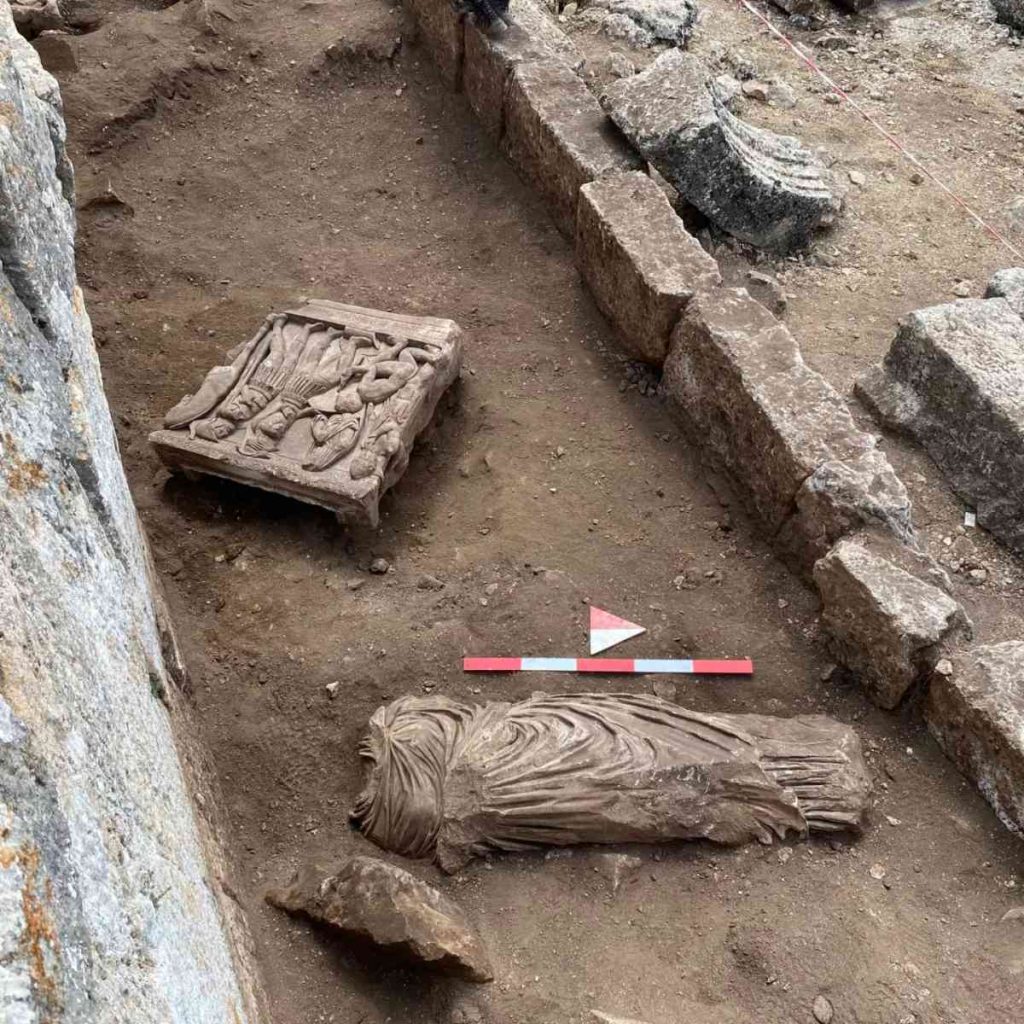
The remains of a 1800-year-old female statue and frieze fragments depicting mythological narratives discovered in the ancient city of Olba
During archaeological excavations at the ancient city of Olba in the district of Silifke, Mersin, a female statue believed to date back to the 2nd century AD and two frieze fragments depicting mythological scenes were unearthed.
The excavations of the ancient city of Olba, known as the center of the Kingdom of Olba, continue under the leadership of Associate Professor Dr. Yavuz Yeğin from the Department of Archaeology at Ardahan University.

In a statement, Associate Professor Dr. Yeğin, the head of the excavation team, said, “Unique artifacts have been unearthed during this season’s excavations. Similar pieces have not been found in the Cilicia region until now. Our work at the ancient city is ongoing at full speed.”

The protected artifacts were delivered to the Silifke Museum Directorate for examination.
📣 Our WhatsApp channel is now LIVE! Stay up-to-date with the latest news and updates, just click here to follow us on WhatsApp and never miss a thing!!
Excavation activities at Olba Ancient City have been ongoing since 2010.
Olba Ancient City
The Kingdom of Olba was an ancient Hellenistic period kingdom located in the southern region of Anatolia, in the present-day district of Silifke within the Mersin province of Turkey. Olba was situated at the foothills of the Taurus Mountains, just northeast of Silifke. The history and archaeological remains of the kingdom are particularly prominent in the 1st and 2nd centuries.

During the Roman era, Olba became a significant center, falling under the governance of the Roman Empire and coming under its influence.
Olba also became an important religious center. Especially during the Christian period, this status is evident not only in written sources but also in the remnants of religious architecture. These include the remains of a large church west of the Olba acropolis, numerous small church remains located on the acropolis, and the ruins of a monastery spread over a wide area in the valley to the east of the acropolis, where the water aqueduct is located.

In addition to the fountain building erected during the time of Septimius Severus, another significant structure in Olba is the two-story aqueduct situated above the valley where the necropolis is located. This aqueduct spans 150 meters in length and reaches a height of 25 meters. The presence of towers constructed for the preservation of this aqueduct and the surveillance of the surroundings underscores the importance of the structure. An inscription on the aqueduct, dating back to 199 AD during the period of Septimius Severus, reads “City of the Olbians,” further emphasizing its significance.
Cover Photo The Olba excavation team
You may also like
- A 1700-year-old statue of Pan unearthed during the excavations at Polyeuktos in İstanbul
- The granary was found in the ancient city of Sebaste, founded by the first Roman emperor Augustus
- Donalar Kale Kapı Rock Tomb or Donalar Rock Tomb
- Theater emerges as works continue in ancient city of Perinthos
- Urartian King Argishti’s bronze shield revealed the name of an unknown country
- The religious center of Lycia, the ancient city of Letoon
- Who were the Luwians?
- A new study brings a fresh perspective on the Anatolian origin of the Indo-European languages
- Perhaps the oldest thermal treatment center in the world, which has been in continuous use for 2000 years -Basilica Therma Roman Bath or King’s Daughter-
- The largest synagogue of the ancient world, located in the ancient city of Sardis, is being restored











Leave a Reply